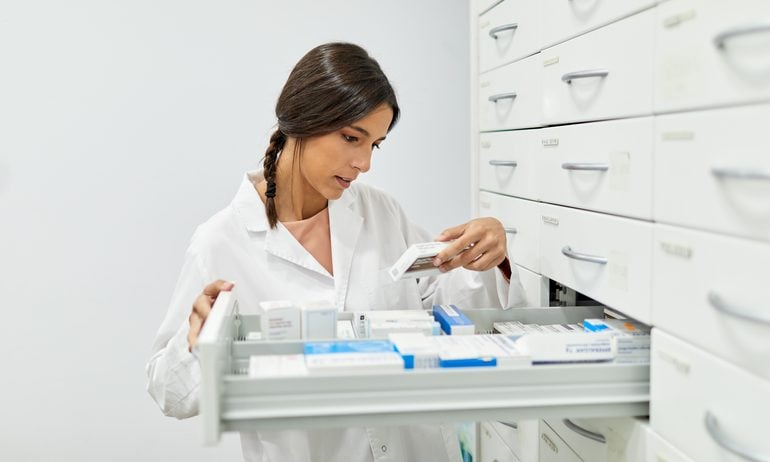Student Debt Continues to Rise for New Pharmacists
Average student debt among pharmacists increased by 4% to $179,514 for the class of 2020.

Many, or all, of the products featured on this page are from our advertising partners who compensate us when you take certain actions on our website or click to take an action on their website. However, this does not influence our evaluations. Our opinions are our own. Here is a list of our partners and here's how we make money.
Pharmacy school students borrow about $173,561 on their path to graduation, according to a July 2021 survey from the American Association of Colleges of Pharmacy.
The AACP, which helps make scholarships and loans available for students, has conducted its graduating student survey annually since 2007. Its 2021 report included responses from nearly 10,800 pharmacy students from 141 schools. More than 85% of respondents indicated they had borrowed money to help pay for their degree.
How much are pharmacists’ loan payments?
Federal student loan payments are currently on hold through August 2022, giving all recent college graduates a bit more time to prepare for repayment.
But whenever new pharmacists’ payments do kick in, their monthly bills could have four digits.
For example, say you finished pharmacy school with the average debt of $179,514. Based on a 10-year repayment term and interest rate of 7%, you would owe over $2,080 each month.
Total debt may be more or less depending on the school you attended. Pharmacists reported an average debt of $204,617 at private institutions in the AACP survey, compared with $143,302 for public programs.
With $204,000 of student debt, monthly payments would be more than $2,368 over a 10-year term at an interest rate of 7%. For $143,000, payments would be roughly $1,660.
Managing pharmacy school debt on low income
Pharmacists had a median salary in 2021 above $128,000, according to the U.S. Bureau of Labor Statistics. But new graduates may earn less depending on their career goals.
For example, 33% of AACP survey respondents said they planned to enter a residency program. The website PayScale places the average salary for pharmacy residents at just under $42,500.
Clint Gossage, a certified financial planner at CMG Financial Consulting in Scottsdale, Arizona, says pharmacists with low incomes post-graduation should consider enrolling in an income-driven repayment plan.
These plans set federal loan payments at between 10% and 20% of your previous year’s income. Payments could be minimal if you didn’t work while in pharmacy school.
"Usually when you go into (income-driven repayment), your first year your payment is going to be $0," Gossage says. "And your next payment will be based on only a half year of income so it’s going to be relatively low."
Income-driven repayment could also make sense if you can’t find a job. The BLS doesn't keep separate unemployment data for pharmacists, but the unemployment rate for all health-care practitioners was 3.8% in July 2020, an increase of more than 150% year over year.
Paying off pharmacy school debt fast
If you’re feeling comfortable financially post-graduation, look at options to pay off student loans fast, like refinancing.
Refinancing replaces your existing student loans with a new loan, ideally with a lower interest rate. Don’t refinance federal loans while payments aren’t due or if you plan to take advantage of a federal program such as Public Service Loan Forgiveness, or PSLF.
PSLF forgives your remaining federal loan balance after you make 10 years of payments while working for an eligible nonprofit employer. Roughly 58% of AACP survey respondents said they plan to work for a hospital, in academia or for the government, which could qualify them for this program.
But Gossage says that if you work in the for-profit sector and your student debt is less than twice your income, “it’s almost mandatory that (you) should be looking into some sort of refinance strategy.”
You also want to consider refinancing pharmacy school loans as soon as possible if you have private loans. Private loans don’t qualify for federal benefits, and refinancing rates are at all-time lows now.
If you had the average pharmacist debt of $173,561, refinancing from a 7% to 5% interest rate would decrease monthly payments by $174 and save you nearly $21,00 overall on a 10-year repayment plan.

